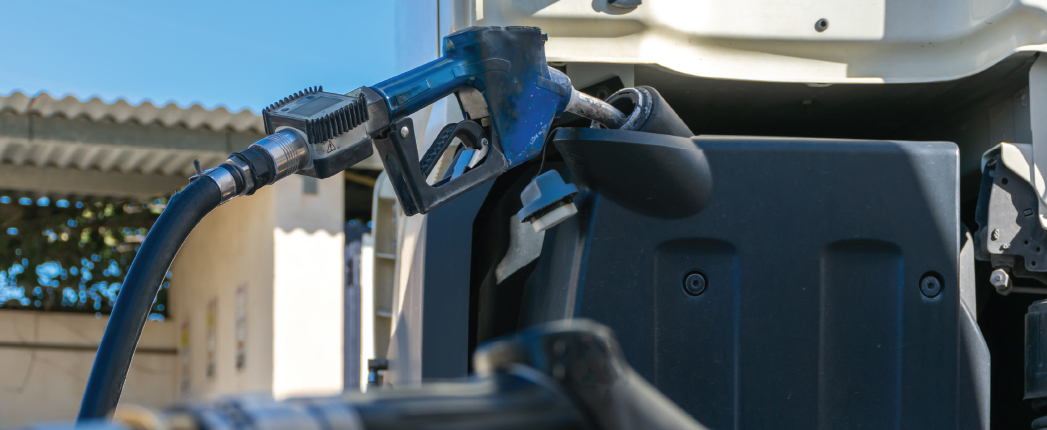
How Does DEF Fit the Lubricants Business?
Diesel exhaust fluid made a big splash in the United States market just a little over ten years ago when new diesel engines equipped with selective catalytic reduction emissions control technology started to roll off the line. The technology was adopted by virtually all diesel-powered original equipment manufacturers as the most cost-effective solution available to reduce nitrogen oxide and meet new emissions standards.
Fundamental to the selective catalytic reduction system is a liquid-reductant agent called diesel exhaust fluid. DEF is sprayed into the SCR exhaust system where it breaks down nitrogen oxides into water and nitrogen. Because it is consumed in the process, diesel engines equipped with SCR technology require a continuous feed of DEF to operate, making DEF the second-most consumed fluid in a truck after diesel fuel.
Though not a lubricant, DEF was identified early on by many lubricant manufacturers and distributors as a new product line with tremendous growth opportunity. And with lubricant demand in the U.S. on a flat to declining trajectory, it was a natural fit with existing customers and a good opportunity for those in the lubricants business to grow sales.
In addition to being a new product segment with large growth opportunity, DEF drew interest because it was not a particularly sophisticated product to manufacture. Although stainless steel tanks and tank trucks, special pumping systems and meticulous housekeeping are needed to manufacture and transport DEF, the product itself comprises only two constituents: 67.5% de-ionized water and 32.5% high quality urea.
It didn’t take long for urea producers to start making DEF and for marketers to begin loading cases and totes of DEF onto their trucks and running bulk shipment. As a complement to other fluids being sold to their customers and with margins around $1.00 to $1.50 a gallon, it was a profitable business with a promising future.
Today, however, some lubricant distributors are scratching their heads and wondering if it’s still a good business to be in because the DEF market has commoditized, competition has intensified, and margins have retreated considerably.
The changing dynamics of the business are in part due to the attractiveness of the market in terms of growth. Once SCR became the technology of choice it was clear that demand would skyrocket, and it did. From a zero base nearly 10 years ago, demand for DEF in the U.S. has reached an estimated 800 million gallons. Where the average annual rate of growth has slowed from highs close to 20% during the early stage, it still remains in the double digits and is expected to continue around that rate for at least the next three years.
Although lubricant distributors were among the first to enter the market, the rapid growth in demand and forecasts for more drew others into the business. Fuel jobbers and brokers delivering by common carrier, in particular, identified similar synergies and opportunities for their own businesses. With that, competition heated up and margins started to erode.
At the same time, large customers were setting the bar for DEF suppliers to clear, which also compressed margins. Even though DEF volumes are a fraction of diesel fuel purchased, large customers exercise buying power by treating DEF like diesel—no quality differentiators, index pricing (commonly with no extra charges on top), bidding multiple companies against each other, and 30-day payment terms instead of 10 or less, as is the case with fuel.
In addition to competition from fuel jobbers that are more accustomed to thinner fuel margins, margins were further compressed by price pushback from customers becoming familiar with the chemistry of DEF. Understanding that urea is the active chemical in DEF and is traded as a commodity, customers grew to expect commodity pricing dynamics. Where some suppliers have been successful in pegging DEF contract prices to changes in the price of urea, others struggle to push through price increases when the cost of urea goes up.
Lubricant distributors, in particular, have demonstrated a reluctance to pass on increases due to concerns of prompting customers to shop for alternatives. Where this risk is real, so is the risk of a distributor dragging its pooled margins down when DEF displaces higher-margin lubricants that would otherwise be on the truck. For some of these distributors, DEF may not be a good fit.
But for lubricant distributors willing and able to adjust to the changing business dynamic, DEF will remain an attractive growth segment. These will likely be distributors that manage the DEF business as a separate profit center, install and upgrade customer storage tanks to allow for larger drops, manage customer inventory, and sell the value of supply security, distributor responsiveness and product quality.
Rather than simply looking at DEF gallons sold, they closely examine the financials for each DEF delivery to understand the real cost and impact of using valuable driver hours and other resources to service each account. If it’s not profitable, they are willing to take the risk and make adjustments to help ensure DEF is and remains a good fit in their business.
Tom Glenn is president of the consulting firm Petroleum Trends International, the Petroleum Quality Institute of America, and Jobbers World newsletter. Phone: (732) 494-0405. Email: tom_glenn@petroleumtrends.com